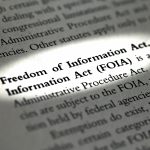Costs, Evidence, Context and Values: Journalists’ and Policy Experts’ Recommendations for U.S. Health Policy Coverage
Health and Science Legal, Policy and First Amendment
Health care issues in the United States continue to increase, despite the U.S. spending more on health care than any other country in the world. Meanwhile, trust in journalism continues to decrease due to political unrest and the rise of “fake news.” Despite these challenges, there is a unique opportunity for journalists to not only take back credibility and audience trust, but to impact overall public understanding of health policy and issues.
Researchers Kim Walsh-Childers, University of Florida College of Journalism and Communications Journalism professor, and Jennifer Braddock, Ph.D. 2013, learning designer, National Society of Leadership and Success, believe that well-researched and communicated stories will lead to improved health care for citizens as they pay more attention to the social policies that influence health and can make better-informed political decisions. Quality coverage also can influence policy-makers’ knowledge, attitudes and beliefs.
But today, research suggests that the U.S. public has limited understanding of how health policy affects their lives, leaving journalists to bear the burden of communicating these complicated issues. To determine what quality coverage of health policy actually looks like, Walsh-Childers and Braddock conducted in-depth interviews with 12 journalists and eight health policy experts.
Neither journalists and health policy experts could specify explicit criteria for journalists, due to the complex nature and range of health policy stories. However, they identified six general elements to address in coverage. These elements are:
- Costs (e.g. how much will this policy cost or save me?)
- Credible sources (e.g. sources from multiple viewpoints)
- Evidence (e.g. unbiased evidence that demonstrates the effects of the policy)
- Values (e.g. framing a story to minimize conflict with the audience’s worldview)
- “Relatable hooks” (e.g. anecdotes and metaphors to help citizens understand and relate to the policy)
- Context (e.g. historical background).
Now more than ever, as the globe faces the COVID-19 pandemic and a challenging political climate, the role of “policy broker” that journalists can play in communicating health policy is unparalleled.
The original article, “Costs, Evidence, Context and Values: Journalists’ and Policy Experts’ Recommendations for U.S. Health Policy Coverage,” was published in Health Communication on May 3, 2021. The research was funded through a 2018 AEJMC Senior Scholars Award.
This summary was written by Alexandra Avelino, UFCJC M.A.M.C. 2020, Student Affairs Program Coordinator at the UF College of Veterinary Medicine.
Posted: May 11, 2021
Insights Categories:
Health and Science, Legal, Policy and First Amendment
Tagged as: health journalism, Health Policy, Jennifer Braddock, Kim Walsh-Childers


